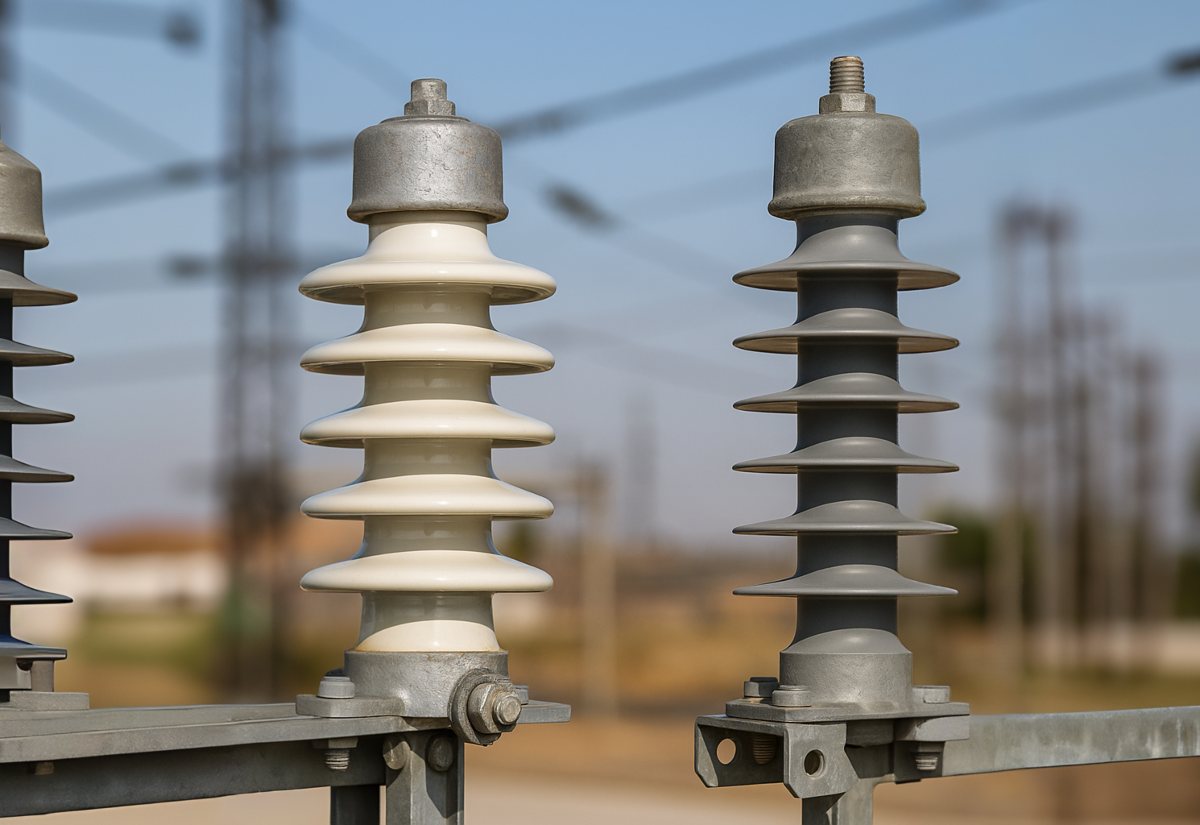Durability and Strength of Porcelain Insulators
Porcelain insulators are known for their durability and strength in various environmental conditions. Unlike polymer insulators, porcelain offers a more robust structure that can withstand extreme temperature and humidity conditions. This makes them ideal for outdoor applications where weather conditions can be unpredictable.
A key aspect of porcelain insulators is their resistance to UV degradation. While polymers can deteriorate over time due to solar exposure, porcelain maintains its structural integrity, ensuring consistent performance over the years.
Additionally, porcelain insulators are less susceptible to damage from physical impacts or vandalism. Their solid and heavy structure makes them less prone to breaking or damage, reducing the need for frequent replacements and, therefore, maintenance costs.
In terms of chemical resistance, porcelain is superior to polymers. It is not affected by exposure to industrial chemicals or environmental pollutants, making it a preferred option for installations in industrial areas.
Key Benefits
- High resistance to UV degradation.
- Greater durability in extreme conditions.
- Less susceptibility to physical damage.
- Superior chemical resistance.
Electrical Properties of Porcelain Insulators
Porcelain insulators offer excellent electrical properties that make them ideal for high-voltage applications. Their ability to withstand high voltages without failing is one of the reasons they are widely used in electrical substations and transmission lines.
Porcelain has a high dielectric strength, meaning it can resist electrical breakdown under high-voltage conditions. This is crucial for maintaining safety and efficiency in electrical networks.
Additionally, porcelain insulators have low electrical conductivity, which minimizes energy losses and improves system efficiency. This is especially important in applications where energy efficiency is a priority.
The ability of porcelain to maintain its electrical properties over time, even in adverse conditions, ensures reliable and consistent performance, which is essential for the stability of electrical networks.
Key Highlights
- High dielectric strength.
- Low electrical conductivity.
- Reliable long-term performance.
- Support for high-voltage applications.
Costs and Maintenance of Porcelain Insulators
In terms of initial costs, porcelain insulators may be more expensive than polymers. However, their longevity and low maintenance requirements often make up for this price difference over time.
Maintenance of porcelain insulators is generally less frequent due to their resistance to degradation and physical damage. This translates into lower operational costs and fewer service disruptions.
Furthermore, the ease of inspection of porcelain insulators allows for early detection of potential issues, which can prevent costly failures and improve system safety.
In comparison, polymer insulators may require more frequent replacements due to their susceptibility to environmental degradation, which can increase long-term costs.
Economic Considerations
- Higher initial costs but lower maintenance.
- Longevity that offsets initial cost.
- Fewer disruptions and operational costs.
- Less frequent replacements than polymers.
Environmental Impact of Porcelain Insulators
Porcelain insulators have a relatively low environmental impact compared to polymers. Porcelain is a natural material that does not release toxic substances during production or decomposition.
Additionally, the long lifespan of porcelain insulators means less waste is generated over time, contributing to environmental sustainability.
Porcelain production also has a lower energy impact compared to polymer manufacturing, reducing the carbon footprint associated with its production.
In terms of recyclability, porcelain can be recycled or repurposed in other applications, minimizing waste and promoting sustainable practices.
Environmental Aspects
- Low environmental impact during production.
- Long lifespan reduces waste.
- Lower carbon footprint in manufacturing.
- Recyclability and reuse.
Specific Applications of Porcelain Insulators
Porcelain insulators are widely used in electrical substations, where their ability to handle high voltages and extreme conditions is crucial. Their use in these applications ensures the stability and safety of the power supply.
In the railway sector, porcelain insulators are preferred for catenaries due to their resistance to vibration and mechanical wear, ensuring safe and efficient railway system operation.
Porcelain insulators are also used in transformers and capacitor banks, where their high dielectric strength and low electrical conductivity are essential for optimal equipment performance.
Furthermore, in industrial applications, porcelain insulators are chosen for their chemical resistance, making them suitable for environments where chemicals may be a concern.
Common Uses
- Electrical substations.
- Railway catenaries.
- Transformers and capacitor banks.
- Industrial environments with chemical exposure.
Comparison with Polymer Insulators
When comparing porcelain insulators with polymer insulators, it is important to consider the advantages and disadvantages of each type. While polymers are lighter and easier to handle, porcelain offers greater durability and resistance to extreme conditions.
Polymer insulators may be more suitable for applications where weight and flexibility are critical factors, but their susceptibility to UV and chemical degradation can limit their lifespan.
On the other hand, porcelain insulators, although heavier, provide greater stability and reliable long-term performance, making them ideal for critical applications.
Ultimately, the choice between porcelain and polymers will depend on the specific needs of the application, considering factors such as the operating environment, maintenance requirements, and long-term costs.
Key Differences
- Durability and strength vs. lightness and flexibility.
- Susceptibility to UV and chemical degradation.
- Stability and long-term performance.
- Specific application considerations.
Porcelain insulators offer numerous advantages over polymers, especially in terms of durability, electrical resistance, and low environmental impact. Although they may have a higher initial cost, their longevity and lower maintenance needs make them an economical choice in the long run. Furthermore, their ability to withstand extreme conditions and resist chemical degradation makes them ideal for critical applications in electrical substations, railway catenaries, and industrial environments. The choice between porcelain and polymers should be based on the specific needs of each application, considering factors such as the operating environment and long-term costs.
